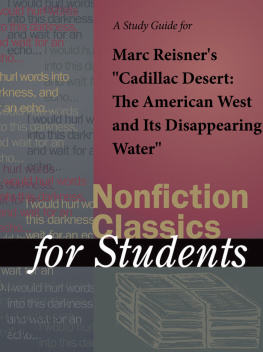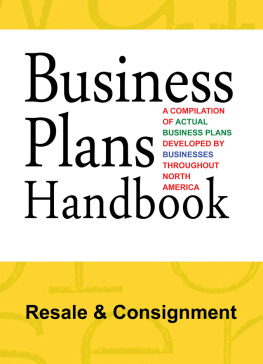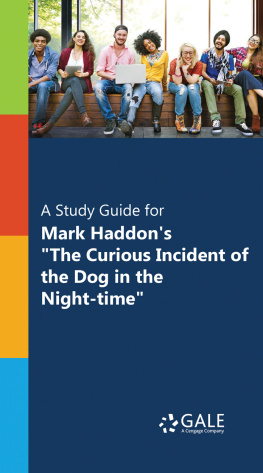TABLE OF CONTENTS
Guide
Nonfiction Classics for Students, Volume 2
Staff
Editor: Elizabeth Thomason.
Contributing Editors: Reginald Carlton, Anne Marie Hacht, Michael L. LaBlanc, Ira Mark Milne, Jennifer Smith.
Managing Editor, Literature Content: Dwayne D. Hayes.
Managing Editor, Literature Product: David Galens.
Publisher, Literature Product: Mark Scott.
Content Capture: Joyce Nakamura, Managing Editor. Sara Constantakis, Editor.
Research: Victoria B. Cariappa, Research Manager. Cheryl Warnock, Research Specialist. Tamara Nott, Tracie A. Richardson, Research Associates. Nicodemus Ford, Sarah Genik, Timothy Lehnerer, Ron Morelli, Research Assistants.
Permissions: Maria Franklin, Permissions Manager. Shalice Shah-Caldwell, Permissions Associate. Jacqueline Jones, Permissions Assistant.
Manufacturing: Mary Beth Trimper, Manager, Composition and Electronic Prepress. Evi Seoud, Assistant Manager, Composition Purchasing and Electronic Prepress. Stacy Melson, Buyer.
Imaging and Multimedia Content Team: Barbara Yarrow, Manager. Randy Bassett, Imaging Supervisor. Robert Duncan, Dan Newell, Imaging Specialists. Pamela A. Reed, Imaging Coordinator. Leitha Etheridge-Sims, Mary Grimes, David G. Oblender, Image Catalogers. Robyn V. Young, Project Manager. Dean Dauphinais, Senior Image Editor. Kelly A. Quin, Image Editor.
Product Design Team: Kenn Zorn, Product Design Manager. Pamela A. E. Galbreath, Senior Art Director. Michael Logusz, Graphic Artist.
Copyright Notice
Since this page cannot legibly accommodate all copyright notices, the acknowledgments constitute an extension of the copyright notice.
While every effort has been made to secure permission to reprint material and to ensure the reliability of the information presented in this publication, Gale neither guarantees the accuracy of the data contained herein nor assumes any responsibility for errors, omissions, or discrepancies. Gale accepts no payment for listing; and inclusion in the publication of any organization, agency, institution, publication, service, or individual does not imply endorsement of the editors or publisher. Errors brought to the attention of the publisher and verified to the satisfaction of the publisher will be corrected in future editions.
This publication is a creative work fully protected by all applicable copyright laws, as well as by misappropriation, trade secret, unfair competition, and other applicable laws. The authors and editors of this work have added value to the underlying factual material herein through one or more of the following: unique and original selection, coordination, expression, arrangement, and classification of the information. All rights to this publication will be vigorously defended.
Copyright 2001
The Gale Group
27500 Drake Road
Farmington Hills, MI 48331-3535
All rights reserved including the right of reproduction in whole or in part in any form.
ISBN 0-7876-5452-3
ISSN 1533-7561
Printed in the United States of America.
10 9 8 7 6 5 4 3 2 1
Cadillac Desert: The American West and Its Disappearing Water
Marc Reisner
1986
Introduction
Historians of the West have typically focused on events that opened the great landscape of the American Desert to settlers. Such events included the Lewis and Clark Expedition, wars with the Indians of the Great Plains, and the Homestead Act of 1862. New historians of the American West have been employing a political environmentalism to develop an environmental history, which has led to a number of revisionist approaches to American West narratives.
Marc Reisner's Cadillac Desert is such a revisionist history. His focus on the creation of infrastructure to support Western settlement exposes a history, not of rugged individualism and romantic cowboys, but of the construction of a heavily subsidized and tremendously expensive "hydraulic society," founded on and maintained by the greed and competitiveness that is behind the American Dream. Reisner examines the West's ecologically dangerous, and ultimately harmful, dependence on dams and aqueducts, as Americans pursue the ideal of taming the Great American Desert. The author focuses on the relentless building of dams and irrigation systems, as well as the corruption behind these developments, to show how the American need to control the environment has affected (and still does affect) the ecological welfare of national resources. Reisner also describes the rivalry between two governmental powers, the Bureau of Reclamation and the U.S. Army Corps of Engineers,in their attempts to transform the nature of the American West.
The year it was published, Reisner's book became a finalist for the National Book Critics Circle Award. In 1999, Cadillac Desert was placed sixty-first on the Modern Library list of the most notable nonfiction English books of the twentieth century. Reisner's book has inspired an entire generation of historians and historically aware environmental activists.
Author Biography
Born in Minneapolis, Minnesota, on September 14, 1948, Reisner grew up in the American Midwest and graduated in 1970 from Earlham College. He spent some time in Washington, D.C., working for Environmental Action and the Population Institute. From 1972 to 1979, he was a staff writer and communications director for the Natural Resources Defense Council.
Reisner was awarded an Alicia Patterson Journalism Fellowship in 1979, when he began the research into water policy in the United States that resulted in Cadillac Desert. In 1986, the book was published and immediately received wide attention; many reviewers saw it as a seminal text on the impact of Western water projects on the environment.
Three years later, Reisner coauthored Overtapped Oasis: Reform or Revolution for Western Water with Sarah Bates, analyzing Western water policy and offering recommendations for change. In 1991, Reisner published Game Wars: The Undercover Pursuit of Wildlife Poachers, which he wrote while observing the work of an undercover agent for the United States Fish and Wildlife Service. After the book's publication, poachers put out a contract on one of Reisner's informants, who ended up killing the hit man and is now in hiding.
Reisner served as a member, cofounder, or consultant to many environmentalist organizations, such as the Nature Conservancy of the Riceland Habitat Partnership, the Institute for Fisheries Resources, and the American Farmland Trust. He was also a consultant to the Pacific Coast Federation of Fishermen's Associations, working to remove old dams in California, and a director of the Vidler Water Company, promoting environmentally benevolent water programs. He wrote for magazines and periodicals and lectured internationally on many environmental subjects. In addition, Reisner was a Distinguished Visiting Professor at the University of California at Davis.
Reisner was working on a book about California's propensity for natural and man-made disasters, when he died of cancer on July 21, 2000, at the age of 51, in California.






















